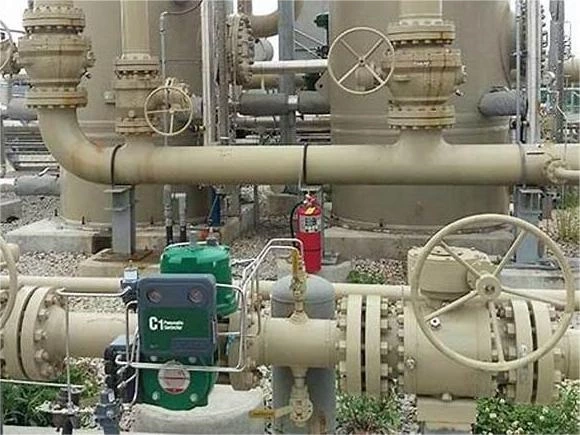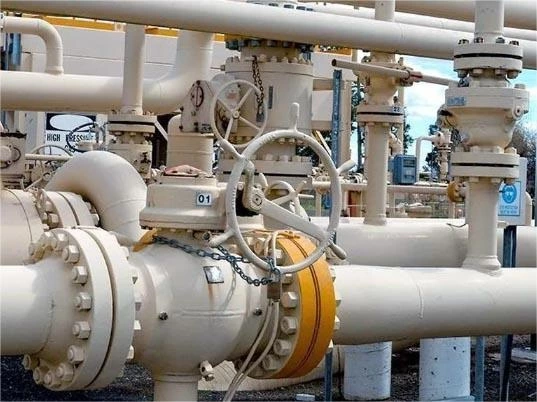Attenuation of Valve Noise
The letting down of gas by valves from a high to a low pressure can produce a troublesome and, in extre cases, unbearable noise. A major portion of the noise arises from the turbulence generated by the high- velocity jetshearing the relatively still medium downstream of the valve. A silencer found successful in combating this noise is the perforated diffuser, in which the gas is made to flow through numerous small orifices. The diffuser may consist of a perforated flat plate, cone, or bucket.
The diffuser attenuates the low and mid frequencies of the valve noise, but also regenerates a high frequency noise in the perforations, which, however, is more readily attenuated by the passage through the pipe and the air than the lower frequencies. A second beneficial effect of the diffuser is to distribute the flow more evenly, over the cross section of the pipe.
Ingard has shown that the normalized acoustic resistance of a perforated flat plate mounted across the pipe is directly proportional to both the Mach number of the flow through the perforations and the factor

where σ = open area ratio of the perforated plate.28 Although this cannot be directly related to noise attenuation, it would appear that the Mach number should be as large as possible, and σ as small as possible. For practical purposes, a maximum Mach number of 0.9 is suggested. If the available pressure drop across the diffuser is limited, a Mach number with a lower value may have to be chosen. Practical values for the open area ratio may be taken as between 0.1 and 0.3. Practical values lower than 0.1 may result in an excessively large diffuser, while values higher than 0.3 may result in too low an attenuation.
The peak frequency of the jet noise is also inversely proportional to the diameter of the jet. Therefore, from the point of noise attenuation, the diameter of the perforations should be as small as possible. To avoid the nozzles from becoming blocked, nozzles with a minimum diameter of 5 mm are frequently used.
If the flow velocity in the pipe downstream of the silencer is high, the boundary layer turbulence along the pipe may generate a noise comparable with the attenuated valve noise. Experience suggests that this will not be a probl if the Mach number of the flow in the pipe is kept below about 0.3.
Predicting valve noise and silencer performance is a complex matter. Discussions on these subjects, including the design of silencers, may be found in the References 29, 30, 31, 32 and 33. Further discussions on the generation and radiation of piping noise may be found in References 34 and 35.


